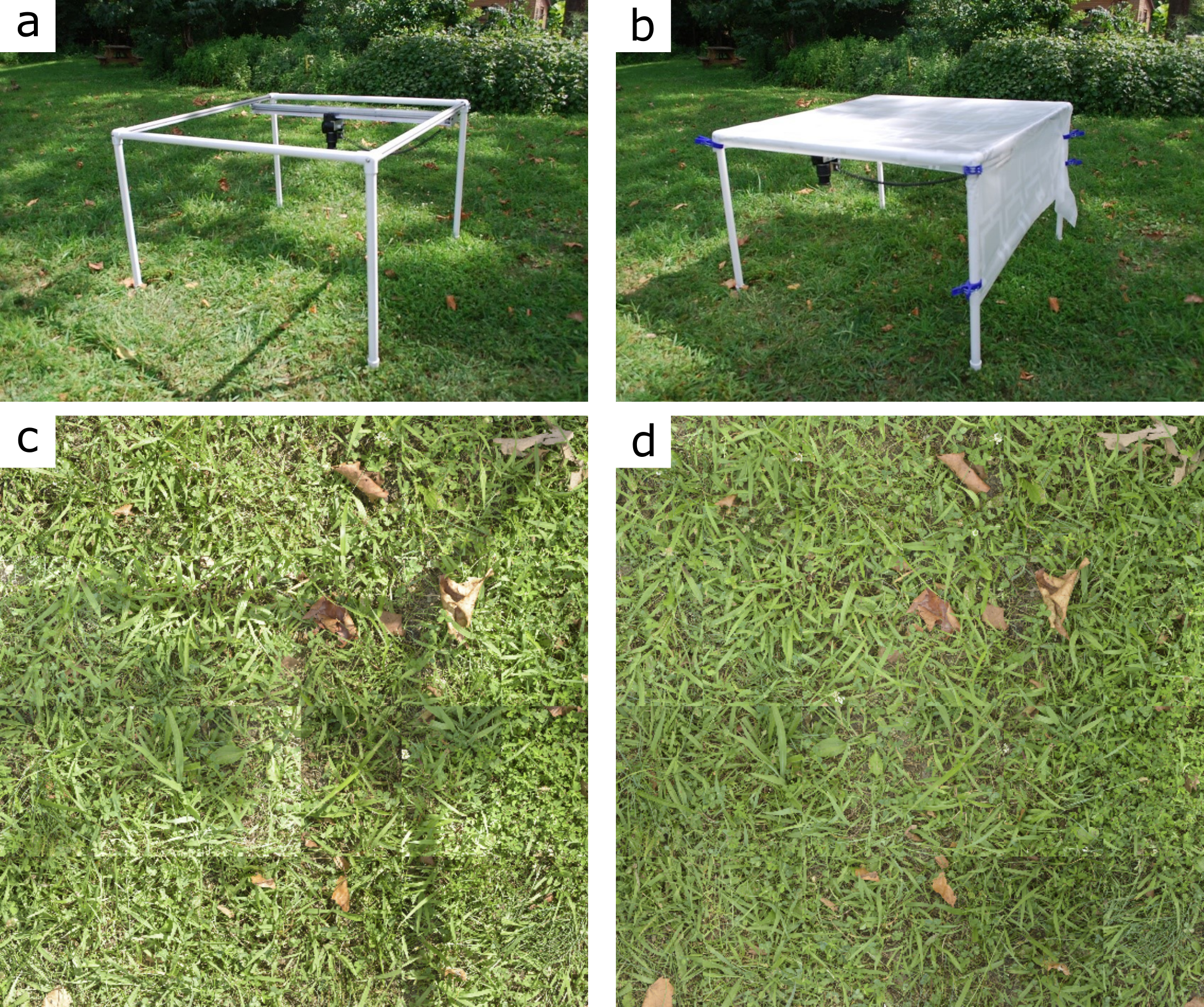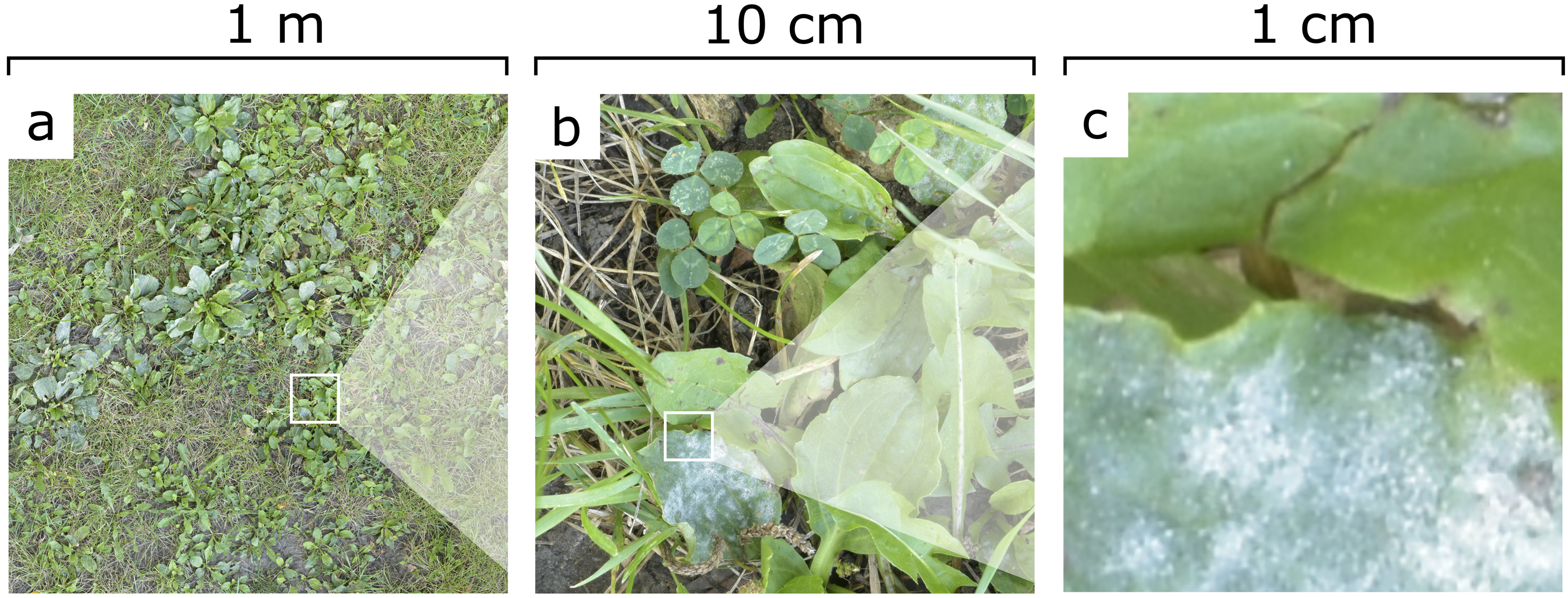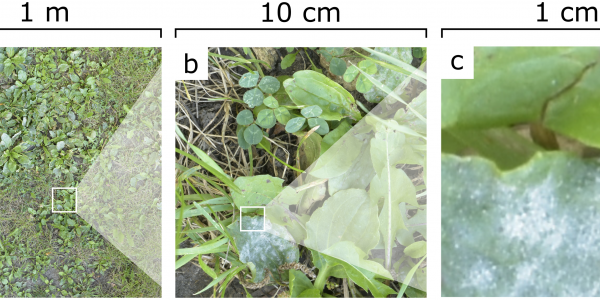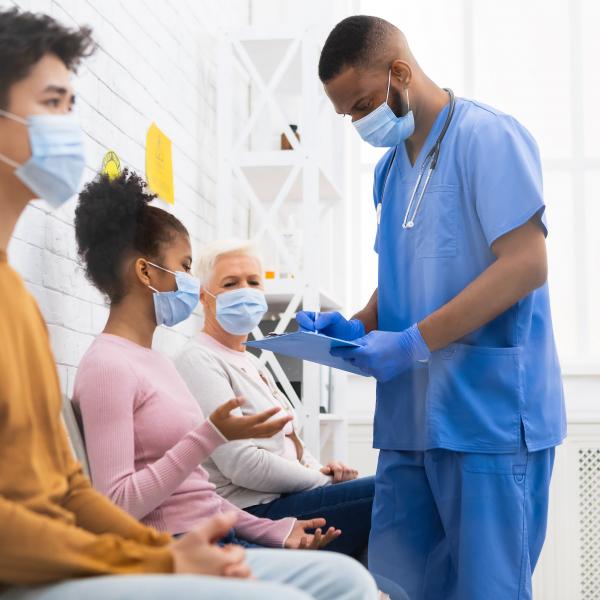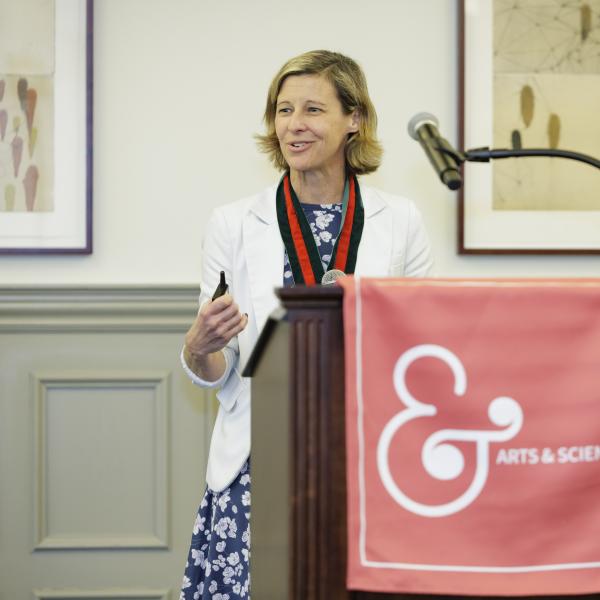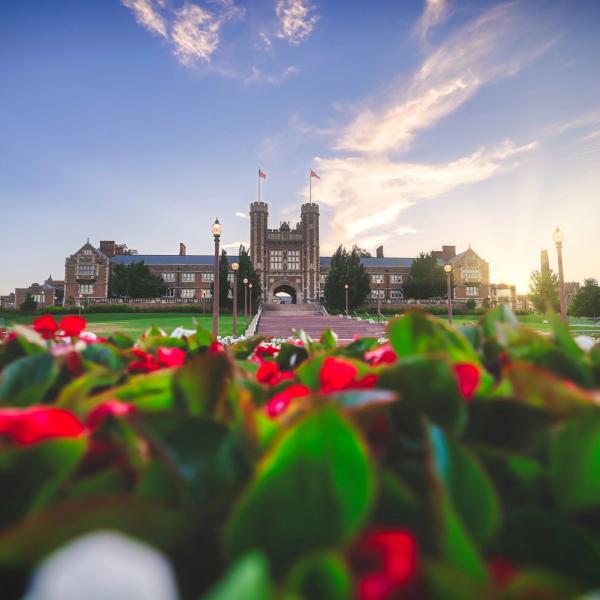Ecologists always grapple with how much data they can collect from field populations, given constraints on time, resources, weather, and other factors.

Rachel Penczykowski, assistant professor in the Department of Biology, knows these challenges well, as she and her team study how plant interactions with pathogens and herbivores change with environmental variation in wild populations. They must balance the amount of information they can gather per field plot -- data on number and spatial positions of individual plants of different species, numbers of leaves, sizes of leaves, stages of flower or seed development, and severity of leaf damage by pathogens, insects, and other disturbances -- with the number of plots they survey per site, and the number of sites in their study.
“One very basic tool that ecologists have used in plant surveys for over 100 years is called a quadrat. We put a square frame on the ground and we collect data within it. But there is always a trade-off between the amount of data you can collect per quadrat, and the number of quadrats you survey. Once you decide on your survey protocol, you hope that you won’t regret not having collected certain types of information from these field plots 5 years down the road."
“To help solve this trade-off problem, ecologists sometimes take photographs of their quadrats to complement data they collect on the ground. But if you want to obtain accurate plant size or position data from those images, you need to photograph the quadrat from above using a tripod or similar. And our lab needs really high-resolution photos to see things like different types of pathogen infection and herbivore damage on the leaves, and other characteristics of leaves, flowers, and seeds. It would take a lot of time and effort to systematically re-position a camera stand over a one-by-one-meter plot to obtain the high-resolution images we need in our research,” Penczykowski explained.

She spoke with colleague Jackson Potter, who teaches mechanical engineering design and dynamics in the McKelvey School of Engineering, about this issue. It was a perfect design challenge for his project-based senior design course, which gives undergrads the opportunity to create devices that solve real life problems.
“I mentioned that our lab needed a camera robot that can take a series of top-down photographs in a repeatable way at the press of a button. It would have to be relatively rugged and easy to transport and use in the field.
“Drones are all the rage for imaging in ecology right now, but we need photos at a higher spatial resolution, closer to the ground. It would be difficult to keep a drone stable that close to the ground, plus wind from the rotors might cause the leaves to move, not to mention the licensing and permissions involved,” Penczykowski said.
Potter’s students built a prototype as a class project, and Robotany was born. It’s a lightweight machine, 4’ by 4’, ½ meter tall, costing only $500 or less. It has PVC legs, aluminum rails and all the electronics are on a middle piece called the bridge. There are two motors programmed to move the camera trolley along the bridge and move the whole bridge along the rails. Everything collapses into a golf travel bag.
The machine takes 24 high-resolution photos per one square meter in 4 minutes and 30 seconds, and researchers can then analyze the images back in the lab to extract data that are relevant to their study. One great thing about collecting all of this high-resolution data is that researchers can refer back to it if they want to answer different questions from the same sites in the future. They can see which species are in the plot, look at which ones are being chewed up by insect herbivores, which ones have been mowed recently, which ones are flowering, and more. They also got helpful advice from Stan Strembicki, professor emeritus of art in the College of Art photography program, on how to handle the issue of dappled light from tree canopies. Simple solutions are to create shade by securing a translucent shower curtain over the apparatus or by holding an umbrella to block sun. Having even lighting across photos in a plot becomes especially important if a researcher wanted to use AI to detect features in the photos.
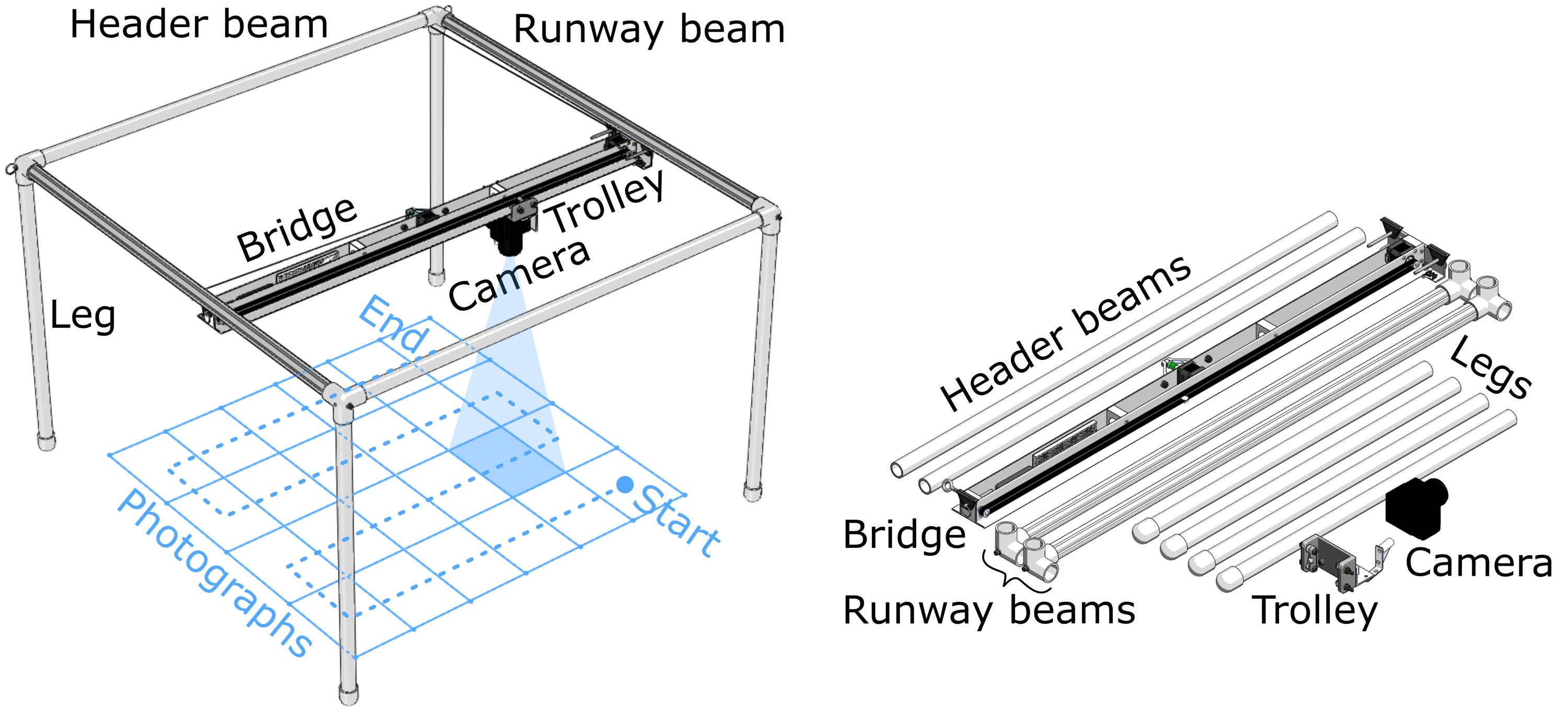
The useful tool is now available to other researchers via publication in the journal Methods in Ecology and Evolution, which has an article type called Practical Tools. These are open access articles, with practical tools of the trade and how to use them. Fancy diagrams in the Robotany paper show how to make the machine, and the article includes a 24-page supplement with detailed instructions and code for 3D printed parts and programming the motors. Sylvia Tan, who continued working on the development of the Robotany as an independent study project after Potter's class, is a co-author on the paper.
“We think this fills a gap in plant imaging, and the peer reviewers agreed. There have been many recent innovations in large-scale imaging and acquisition of data from satellites and drones. And there are a lot of interesting camera setups in big agricultural fields. Then at the very small scale, there are a lot of innovations in imaging individual plants in a greenhouse, including in the Phenotyping Facility at the Donald Danforth Plant Science Center. But until now, ecologists didn't have any portable devices to help us take precise images within our standard one-by-one-meter plot.
“It’s been fun to engage with people who ask what we are doing in the field. When you unzip a big duffel bag, set up a robotic contraption, bust out your umbrella, and start the machine, people definitely have questions. It’s been fun to explain what the Robotany does!” Penczykowski exclaimed.
To learn more about Robotany, see the article in Methods in Ecology and Evolution and watch this video with detailed instructions.
